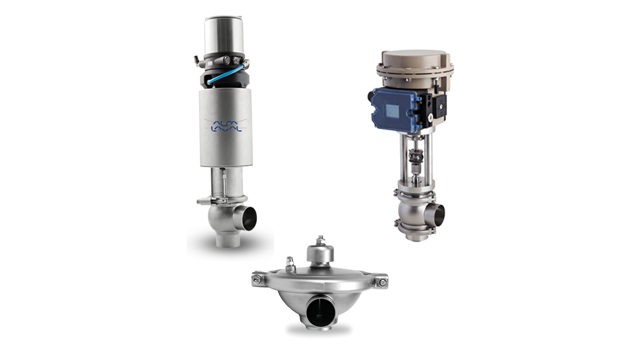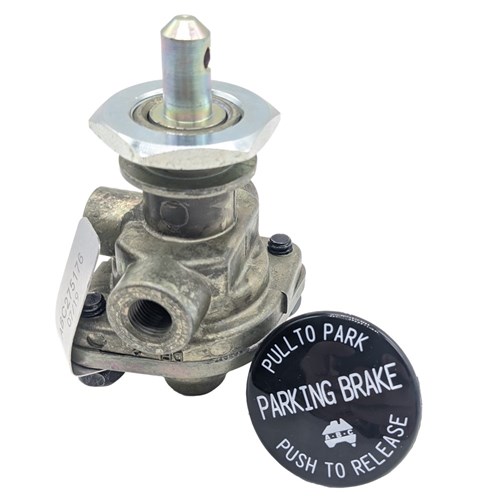Enhancing Functional Performance with Advanced Control Valves
Enhancing Functional Performance with Advanced Control Valves
Blog Article

Maximize Energy Financial Savings and Convenience With Advanced Building Automation Controls
In the realm of modern-day architecture and facility monitoring, the integration of sophisticated building automation controls stands as a critical improvement. The merging of innovation and sustainability has actually birthed a new period where energy effectiveness, convenience optimization, and operational streamlining are no more possible facts yet far-off desires. By taking advantage of the power of automation, buildings can adapt, respond, and evolve in manner ins which were when unthinkable. The potential for considerable power savings and boosted convenience is not just an opportunity however a pledge waiting to be fulfilled. This standard shift in building monitoring holds the vital to unlocking a globe where environmental conscientiousness and owner wellness harmoniously exist together within the wall surfaces of our structures.
Energy Performance Perks
Power effectiveness advantages can substantially reduce power intake and functional costs in buildings. By applying energy-efficient techniques and technologies, structure proprietors and operators can accomplish significant cost savings while also adding to environmental sustainability. One of the main benefits of improving energy performance in buildings is the reduction of utility costs. Energy-efficient systems, such as innovative building automation controls, can optimize making use of resources like air conditioning, heating, and lighting, bring about reduced power costs in time.
Furthermore, boosted power performance can prolong the lifespan of structure devices and systems. By running a lot more effectively, a/c systems, lighting fixtures, and various other structure components experience less damage, leading to reduced maintenance and replacement expenses. Additionally, energy-efficient buildings commonly regulate higher residential or commercial property worths and rental prices, giving long-term economic advantages to proprietors.
Furthermore, energy effectiveness can enhance owner convenience and productivity. Properly managed interior environments with optimum lighting and thermal conditions produce an even more positive and helpful office, bring about boosted employee contentment and efficiency. Overall, the power efficiency advantages related to advanced building automation controls are complex, incorporating expense financial savings, environmental stewardship, and resident well-being.
Enhanced Convenience Control
Enhancing comfort control in building environments needs an advanced combination of sophisticated automation systems for optimal resident well-being. By utilizing advanced structure automation controls, facilities can customize the interior setting to satisfy the specific requirements and preferences of owners. control valves.
Boosted convenience control surpasses fundamental temperature adjustments. It consists of functions such as customized settings, occupancy sensors, and all-natural light usage to produce a dynamic and responsive setting. By including these sophisticated controls, structures can not only boost convenience yet likewise boost power effectiveness by maximizing system operations based on actual tenancy and use patterns. Eventually, focusing on owner convenience via sophisticated automation systems causes a much more enjoyable and healthier interior atmosphere.
Operational Performance Improvements

Moreover, the application of real-time tracking and analytics devices enables building drivers to determine energy inefficiencies and functional anomalies without delay. By continuously monitoring energy usage patterns and system efficiency metrics, adjustments can be made in real-time to maximize energy consumption and guarantee peak functional performance. control valves. In addition, integrating need response methods into structure automation controls can additionally improve functional efficiency by dynamically changing power usage based on grid conditions and rates signals
Indoor Environment Optimization
Reliable indoor environment optimization is a basic facet of building automation controls, guaranteeing passengers' convenience and well-being while making best use of energy financial savings. By making use of sophisticated sensing units and controls, constructing automation systems can constantly readjust and keep track of temperature, humidity levels, air quality, and ventilation to develop an ideal interior setting. Preserving comfortable and constant problems not just enhances passenger satisfaction yet likewise enhances efficiency and general well-being.
Interior environment optimization additionally plays a critical function in energy efficiency. By fine-tuning air flow, home heating, and cooling systems based on real-time data and tenancy patterns, developing automation controls can dramatically lower energy intake - control valves. For example, carrying out methods such as demand-controlled ventilation and thermal zoning can assist minimize energy waste while guaranteeing that each area of the structure obtains the necessary conditioning.

Sustainable Setting Production
Structure automation regulates not reference just enhance interior environment problems visit this site right here for power efficiency and occupant convenience yet likewise lay the structure for producing a lasting atmosphere with calculated management of systems and sources. By integrating innovative structure automation modern technologies, such as sensors, actuators, and smart software program, facilities can keep an eye on and readjust energy usage in real-time to lessen waste and reduce their carbon impact. These systems make it possible for anticipating maintenance, identifying prospective concerns before they rise and enhancing devices performance to boost long life and efficiency.
Furthermore, sustainable environment creation extends past power management to encompass water preservation, waste reduction, and interior air quality improvement. Building automation controls can manage water usage, spot leakages, and guarantee appropriate waste disposal techniques, adding to total sustainability initiatives. Furthermore, by managing and checking ventilation and purification systems, these technologies enhance owner wellness and performance while lowering power usage related to HVAC operations.
Final Thought
Finally, progressed structure automation controls deal significant benefits in terms of energy cost savings, convenience control, functional effectiveness, indoor climate optimization, and developing a lasting setting. By applying these controls, buildings can attain ideal performance while decreasing power consumption and improving passenger comfort. It is obvious that making use of sophisticated automation modern technology is vital in boosting building efficiency and creating a more sustainable future.
Power efficiency benefits can significantly minimize power intake and functional prices in buildings. In general, the power effectiveness advantages linked with sophisticated structure automation controls are complex, encompassing price financial savings, ecological stewardship, and owner wellness.
In addition, integrating demand response techniques right into structure automation controls can further boost operational performance by dynamically readjusting energy use based on grid conditions and rates signals.
Building automation manages not only optimize indoor climate problems for energy performance and resident comfort yet likewise lay the foundation for creating a lasting atmosphere with tactical management of resources and systems.In verdict, advanced structure automation regulates offer considerable advantages in terms of power financial savings, comfort control, functional performance, interior environment optimization, and developing a lasting setting.
Report this page